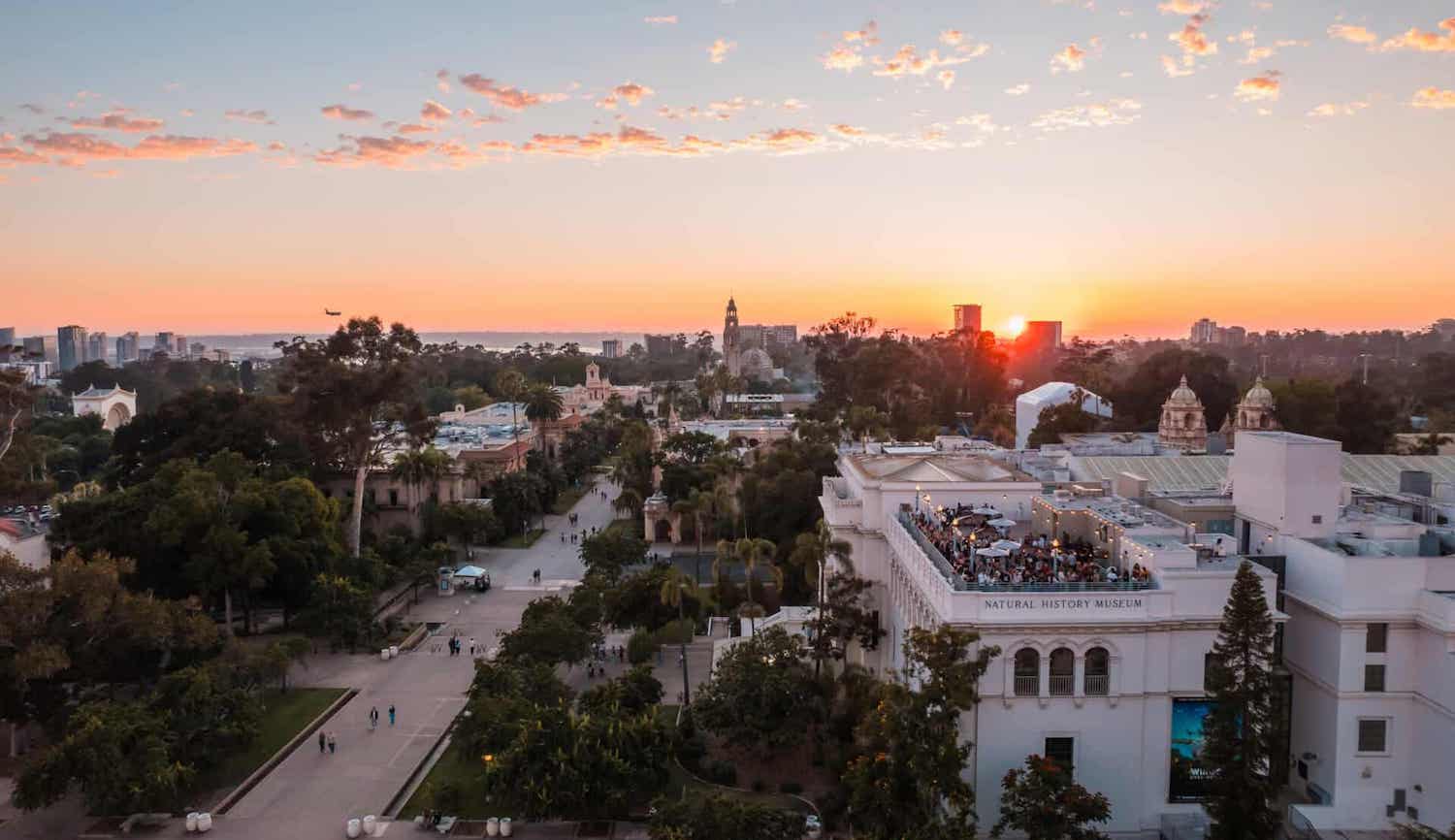Oregon
Ashland New Plays Fest 2023: families facing tough times and choices | Oregon ArtsWatch

Even though theater is in trouble, both in Oregon and beyond, I still found many memorable moments in the couple dozen or so plays I attended in 2023. I won’t attempt a comprehensive review — ArtsWatch’s excellent theater writers Marty Hughley and Darlene Ortega hit most of my highlights, and many more — but definitely want to offer a mighty shout-out to stellar shows from Shaking the Tree, Fuse, the revitalized Bag&Baggage Productions, HART and many others.
I also encountered one considerable pleasant, non-local surprise: a touring big-name musical that actually offers promise for the musical’s future instead of wallowing in its past. The sugary pop songs of Six, which came to Portland’s Keller Auditorium in July, aren’t necessarily my jam, and I’m generally unmoved by theater that tries to cover sweeping swaths of history rather than focusing on the unities of time and place. And admittedly, the show’s creators never quite figured out how to conclude it, instead whiffing on a tacked-on tie-up that told instead of showing.

But up until then, the sparkling show’s tight pacing, gleeful embrace of the rock concert concept, sly, character-based humor, pop-culture sensibility, and respect for a modern audience’s intelligence and attention span all offer lessons in how to make musicals truly sing for today’s audiences. The proof was also offstage, in the sold-out houses and laughing, cheering, demographically diverse (including much younger than usual) audiences.
***
Still, my most memorable 2023 theatrical experience came not in Portland, but in Ashland. And not where you’d expect. I wasn’t able to make it to the troubled Oregon Shakespeare Festival this year, but a week after it closed, I ventured a few blocks away to Southern Oregon University for the latest edition of the annual Ashland New Plays Festival, which began 30 years ago. Amid so much bummer news about American theater, I found plenty of hope for its future there.
For a detailed description of the nonprofit festival’s origins and approach, check my ArtsWatch feature and review of last year’s festival. Briefly: The plays are curated by the community, with dozens of volunteers (most from Southern Oregon) reading, cumulatively, hundreds of script submissions, discussing them in groups, winnowing them down to a dozen, from which Artistic Director Jackie Apodaca, an SOU theater professor, then chooses the final group.
This year only three made it to SOU’s Main Stage Theater, where each received two staged readings (no props, sets or costumes, with actors standing in place or seated in chairs on stage, scripts in hand) over the weekend of October 19-22.
Many of the actors are professionals from OSF and beyond, directed by experienced professional directors, so performance quality is uniformly compelling. Each performance is followed by a Q&A session featuring the playwrights, directors, and cast members.
As before, I came away impressed by the audience members’ insightful questions and responses. The festival no doubt owes some of its high degree of engagement and conversation to the fact that many audience members actually participated in the curation process. They really are the secret sauce of ANPF’s success.
Because of the single-weekend run and limited rehearsal time, and because these are staged readings of scripts still in development, it’d be unfair to provide a standard review of these productions. (Don’t let that discourage you from attending: Good staged readings can be more powerful than full productions, as Shaking The Tree’s recent offering of Federico Garcia Lorca’s The House of Bernarda Alba and numerous Fertile Ground Festival of New Works shows have proved.) But all three scripts — which coincidentally revolved around interfamily interactions — offered plenty of worthwhile ideas that merit further development, along with a few shortcomings. Here’s an overview of what I saw, aimed at helping the playwrights take their work to the next stage.
Death Foretold

The strongest audience response erupted after Ashland, which admittedly had a home court advantage: Minneapolis-based Ashland native Isabel Estelle’s play drew old friends and fans from the playwright’s home state. There’s nothing in the script that necessarily binds the story specifically to Oregon, although the setting does require both a mountain and legal acceptance of death with dignity laws. Estelle, who received a standing O as she took the stage before the post-show Q&A, is telling a universal story about family.
This one is thrown into turmoil by a young woman’s sudden terminal illness diagnosis, as her siblings and new partner negotiate their own and each other’s complex, conflicting, and, as her condition progresses over a summer in Ashland, evolving responses to the imminent trauma. All love the dying woman in their own way, and all must reconcile her needs with their own — denial, closure, acceptance and more.
Because they’re all drawn as fundamentally good and loving people, serious conflict seldom flares. Given that the action is set in the Northwest (think Oregon/Minnesota nice) rather than, say, the South, over-the-top emoting would run the risk of melodramatic inauthenticity. But that also means the tension feels a little muted, despite the magnitude of the stakes. And the flashback finale coda proved not just anachronistic but also anticlimactic. Still, there’s plenty of drama in the tough physical and emotional realities expertly detailed here.
Estelle also commendably keeps the action tight and moving (in both senses), which further avoids wallowing in grief, but also leaves a couple of characters (the protagonist’s sister and a hospice nurse) somewhat underdrawn. The current version also seems to need an additional backstory scene that might set up the ferocity of the protagonist’s partner’s resistance to her lover’s chosen course. While I too often find contemporary dramas overly didactic or just too darn long, I enjoyed these characters so much that I’d trade a bit more length to achieve greater depth.
Even if Ashland mostly eschews dramatic fireworks, it finds surprising power in, of all places, its, er, dead-on use of humor. “Grief and humor are inseparable to me,” Estelle explained in a program note, “because dying is such an absurd, unceremonious thing, it’s impossible for it not to be funny.” Ashland’s humor reflects how real people (especially the protagonist’s brother) often deal with grief, and gives the audience a break from what could have been strictly a weep-fest. “It’s about taking care of the people you love,” director Caroline Shaffer noted in the post-show Q&A. “Humor is part of that.”
Of course, tears do emerge, on stage and off — but they’re earned, not wrung forth by easy sentimentality. Death is something we all must face sooner or later, and Ashland skillfully and movingly navigates the difficult, uncertain emotional terrain between toughness and tenderness, poignance and laughter, living and dying. I hope other theaters, especially in Oregon, will produce it.
Family Fusses

Both Ashland and New York playwright Bleu Beckford-Burrell’s Lyons Pride share a similar setup — siblings who don’t always align. Each also contains a fun family dance scene. But they differ drastically in just about every other way. As cast here, the former is white, the latter Black Jamaican immigrants. While Ashland’s characters, like the dormant volcano of nearby Mt. Shasta, hold a lot inside, the Lyons roar. Estelle does a lot more showing than telling; it’s the reverse with Beckford-Burrell. Although end-of-life care can be expensive, Ashland avoids financial implications, while class issues suffuse Lyon’s Pride — a near-universal issue that far too many American plays unfortunately avoid entirely. And where Ashland flashes almost too quickly over its interpersonal intricacies, Lyon’s Pride basks in them over its two and half hour run time, nearly twice as long as Estelle’s show.
At the post-show Q&A, the first-generation Jamaican-American actor/playwright explained its ambitious if overstuffed structure: It started out as a different story entirely, some of which she folded into (or more accurately, stitched onto) Lyons Pride, which itself is part of what looks to be a fascinating, complex larger cycle involving the same family.
What really drives the action here is money: who has it, who doesn’t, how to get it to survive. That gives rise to themes about how the need for money can conflict with pride and dignity, and how people can make tough situations even harder on themselves as a result. In that sense, Lyon’s Pride traces its lineage of financially struggling families back through other American classics, from Clifford Odets to Arthur Miller to August Wilson.
I especially appreciated Beckford-Burrell’s nuanced depiction of differing attitudes toward money and class among immigrant families of different generations and arrival times. But too often, those attitudes, and even some characterizations, were conveyed through sometimes didactic declamation, rather than via dramatic action.
The male characters mostly remain underdeveloped, representing points of view or idealized objects more than fully realized people. Yet Beckford-Burrell draws such vivid, memorable, funny (especially the character of Queen), flawed, real female characters that they invite actors (all superb here) to flesh them out and make audiences want to spend more time with them. If later incarnations of this family dramedy can shed some superfluous subplots and tighten the focus on those compelling figures, I’ll gladly return to their messy and moving portrayals of the complexity of family love.
Future Imperfect

Immigration, class conflict, assisted suicide … the festival’s community curators apparently, and admirably, favored plays that addressed contemporary social issues. And there’s none more urgent than the impending human-caused climate catastrophe. Long Time Coming laudably strives to show why some 20th century Americans who actually had the power to shape the future made — and are still making — morally deplorable choices that jeopardize their children’s future. The story, which involves yet another interfamily interplay, ping pongs between 2124 and 2024, and, we gradually learn, revolves around events from decades earlier that contributed to present and future disasters.
As a lifelong fan of speculative fiction, I admired Los Angeles-based playwright Weston Gaylord’s smooth, organic integration of futuristic details though action and judicious passing references, a hallmark of compelling SF since the middle of the last century but too often missing when dabbling writers unfamiliar with that heritage clumsily try to incorporate speculative elements.
Gaylord knows his science. The Seattle native, who describes himself as “a writer and mixed-reality creative technologist,” majored in Symbolic Systems with a focus in Human-Computer Interaction at Stanford University, and in his day job creates mixed-reality installations and other dramatic works that center science. Here, he even imagines how language might gradually evolve (plausibly based on texting and other contemporary expressions), yet, in the tradition of writers like Anthony Burgess and Russell Hoban, keeps the meaning clear.
Communication is a major theme. The main future characters (who are descendants of their present-day counterparts) make their living as “Tellers” in a post-apocalyptic future. They recount from memory what used to be stored digitally before the big disaster(s), which are referenced but wisely not detailed: We all can too easily imagine what they might be.
However useful that skill might be in 2124, and as intriguing as the world Gaylord imagines can be, all that telling doesn’t make for very riveting 21st century stage action. In fact, most of the play consists of one character sometimes tediously telling another about a whole lotta stuff that happened a long time ago, almost like an old bardic ballad. But at least the old bards had music to make the info go down easier.
Admittedly, it’s a tough challenge to dramatize the systemic forces that threaten civilizational collapse, which don’t always lend themselves to simplistic hero vs. villain conflicts. But that’s a prime task facing 21st century playwrights. We desperately need them to address crucial social issues in a humane way that journalism and even other art forms can’t. Kudos to Gaylord, Beckford-Burrell, Estelle and ANPF’s community curators for taking on that vital challenge.
At a moment when that other, more famous Ashland theatrical institution is receiving so much blowback from some of its legacy audiences, in part for its recent perceived turn from historical to contemporary focus, it’s inspiring to see so many Ashland theater lovers, of all generations, demanding dramas that speak to our fraught present — and future.
***
Dates for next year’s Ashland New Plays Festival haven’t been announced yet. Stay tuned to ArtsWatch for information on ANPF 2024.

Oregon
First salmon in century reach Oregon's Klamath Basin after dam removal

On the U.S. West Coast, conservationists for the world’s largest dam-removal project are both celebrating initial successes and encountering short-term obstacles. VOA’s Matt Dibble has our story from the Klamath River on the border between California and Oregon.
Oregon
Oregon snags Northwestern cornerback Theran Johnson

USA Today Sports photos
Editor’s Note: This article first appeared on Rivals.com, the leader in college football and basketball recruiting coverage. Be the first to know and follow your teams by signing up here.
Northwestern junior cornerback Theran Johnson will be transferring to Oregon.
The 5-foot-11, 182-pounder from Indianapolis (Ind.) North Central High had 53 tackles (40 solo), two interceptions, one of which is returned for a touchdown, and 10 passes defended this season. He has 103 tackles, 18 passes defended and three interceptions on 37 games at Northwestern.
Johnson had a season-high seven tackles in a 26-20 overtime win at Purdue on Nov. 2, and he returned an interception 85 yards for a touchdown in the 40-14 loss at Iowa the next week.
The former Rivals.com three-star prospect was the No. 12 overall player in Indiana and the No. 65 cornerback nationally in the class of 2021. He picked Northwestern over the likes of Cincinnati and Notre Dame, along with Ivy League programs Dartmouth and Yale.
Stay locked in on the Rivals Transfer Tracker to keep up with the latest transfer news, portal entries, commitments, and rankings. For a deep-dive into the transfer portal, make sure you visit the Rivals Transfer Search page.
The Rivals Transfer Portal X account is a must-follow for any college football fan.
The winter college football transfer portal window is scheduled to open on December 9th, 2024 for 30 days. Additionally, players have a 30-day window to transfer if their head coach leaves. There is also a five-day window for players to transfer after their team has finished postseason play.
Oregon
2025 Look-Ahead: Will Oregon Lose a Game?

The Oregon Ducks’ 2025 football schedule released earlier this week and laid out the team’s path for next season. Here I’ll take a look at each game and offer a tentative prediction, fully knowing that rosters and game times have not yet been set.
August 30th vs Montana State
Not too much to consider here. Montana State is a respectable FCS program but shouldn’t hold a candle to Oregon on the field.
The Ducks had a bit of a tough time against Idaho in week one this year but I trust that that was an aberration.
Prediction: Oregon wins
September 6th vs Oklahoma State
This makes for a fun out-of-conference power four game that shouldn’t be too worrisome for fans. Oklahoma State has had a great run under coach Mike Gundy but appears to have lost its step a bit this year.
Prediction: Oregon wins
September 13th @ Northwestern
This could be a bit of a weird one as Northwestern breaks in a new stadium but the Ducks will still be relatively fresh which tamps down concerns about a trap game. The Wildcats don’t recruit or develop at a level that should create any real threat to Oregon and this game takes place before weather should really be a factor.
Prediction: Oregon wins
September 20th vs Oregon State
Oregon will welcome the Beavers back to Autzen Stadium again for just the second non-conference matchup between these programs. Credit to Oregon State for managing to recruit at a reasonable level this year (68th nationally per the On3 Industry Rankings), well above many power conference teams but I don’t think it’ll be nearly enough.
Prediction: Oregon wins
September 27th @ Penn State
As a rule I don’t predict undefeated seasons so there has to be a loss somewhere. Presumptive 2025 starting quarterback Dante Moore will not have played in an environment comparable to Beaver Stadium and the Ducks will be playing their fifth game in as many weeks.
I expect a charged atmosphere in College Park for this one and although Penn State has struggled to beat elite teams under coach James Franklin, I’ll say they snare Oregon here.
Prediction: Oregon loses
October 11th vs Indiana
Bit of a tough one to analyze here. It’s unclear how much of Indiana’s roster will be retained past 2024 and while this has been an incredible year for the Hoosiers, I don’t expect them to be winning double-digit games on a consistent basis.
This will the their first trip to Autzen Stadium and I think the roster differential as well as home environment will be too much to overcome.
Prediction: Oregon wins
October 18th @ Rutgers
Just two weeks removed from a bye, I expect a sharp outing from Oregon here. Rutgers is a stable, well-coached operation but realistically isn’t in the same hemisphere as the Ducks. I have all the respect in the world for Scarlet Knights’ coach Greg Schiano but Rutgers isn’t known for being especially difficult to win at and there are any number of reason to not be concerned here.
Prediction: Oregon wins
October 25th vs Wisconsin
Is this a revenge game? Wisconsin pushed Oregon to the brink this year, holding the team to 16 points and maintaining a lead into the fourth quarter.
Next year figures to be a little different. The Ducks were on the last game of eight in a row this season and clearly wore it on the field.
With motivation to put 2024’s nail-biter behind them as well as the Autzen crowd at their backs and a better rest situation, I don’t expect many challenges.
Prediction: Oregon wins
November 8th @ Iowa
In my mind this is the biggest trap game of 2025 as Iowa consistently fields a disciplined unit that makes you beat them. It’s hard to imagine coach Kirk Ferentz adapting his system much between this year and next so points will likely be at a premium for the Hawkeyes once again.
On the flip side this will be a quality team that has a good home atmosphere and should be excited to host a West Coast power in Oregon. It’s one of my lower-confidence predictions but I think the Ducks, fresh off a bye, get this one done with a far more dynamic offense than Iowa has been able to muster.
Prediction: Oregon wins
November 15th vs Minnesota
I like coach P.J. Fleck as much as the next guy but the talent discrepancy here will, again, be tough to overcome. A reasonably rested Oregon team will be playing its second-last home game of the year and should be in the thick of the playoff mix, leaving little room for an upset.
Prediction: Oregon wins
November 22nd vs USC
It occurred to me while writing this that USC’s had to play at Autzen in its last two matchups against the Ducks but I’m not one to feel bad. It will be difficult for coach Lincoln Riley to get this team to a place where they can contend against the best teams in the country in just one offseason and Oregon is never shy on motivation going against the Trojans.
I won’t say I outright expect a blowout but this is definitely a game I could see being over early.
Prediction: Oregon wins
November 29th @ Washington
Second-highest in the trap rankings for next year is a road matchup against the Huskies. It’s hard to call a rivalry a trap game but after trouncing them this year, Oregon could come into this one a little headstrong.
I also expect a much-improved Washington team in year two under coach Jedd Fisch as he did at Arizona, taking the team from one win in his first season to five the next. With that all said, this is another opportunity for Oregon to avenge its 2023 loss at Husky Stadium and likely punch its ticket to another Big Ten Conference Championship appearance.
Prediction: Oregon wins
Record Prediction: 11-1
It was difficult to find a loss on this schedule but like I said, I don’t really predict undefeated seasons due to how rare they are. In any given year even the best team is likely to drop one at some point.
I could see this being another 12-0 regular season for the Ducks but three somewhat dicey games prevent me from calling it outright. I expect another great year for Oregon with plenty of elite talent backfilling losses from this season’s roster and a likely berth in the College Football Playoffs.
-

 Technology1 week ago
Technology1 week agoStruggling to hear TV dialogue? Try these simple fixes
-

 Business1 week ago
Business1 week agoOpenAI's controversial Sora is finally launching today. Will it truly disrupt Hollywood?
-

 Politics3 days ago
Politics3 days agoCanadian premier threatens to cut off energy imports to US if Trump imposes tariff on country
-
/cdn.vox-cdn.com/uploads/chorus_asset/file/25782636/247422_ChatGPT_anniversary_CVirginia.jpg)
/cdn.vox-cdn.com/uploads/chorus_asset/file/25782636/247422_ChatGPT_anniversary_CVirginia.jpg) Technology4 days ago
Technology4 days agoInside the launch — and future — of ChatGPT
-
/cdn.vox-cdn.com/uploads/chorus_asset/file/25789444/1258459915.jpg)
/cdn.vox-cdn.com/uploads/chorus_asset/file/25789444/1258459915.jpg) Technology3 days ago
Technology3 days agoOpenAI cofounder Ilya Sutskever says the way AI is built is about to change
-

 Politics3 days ago
Politics3 days agoU.S. Supreme Court will decide if oil industry may sue to block California's zero-emissions goal
-
/cdn.vox-cdn.com/uploads/chorus_asset/file/25546252/STK169_Mark_Zuckerburg_CVIRGINIA_D.jpg)
/cdn.vox-cdn.com/uploads/chorus_asset/file/25546252/STK169_Mark_Zuckerburg_CVIRGINIA_D.jpg) Technology3 days ago
Technology3 days agoMeta asks the US government to block OpenAI’s switch to a for-profit
-

 Politics4 days ago
Politics4 days agoConservative group debuts major ad buy in key senators' states as 'soft appeal' for Hegseth, Gabbard, Patel




















